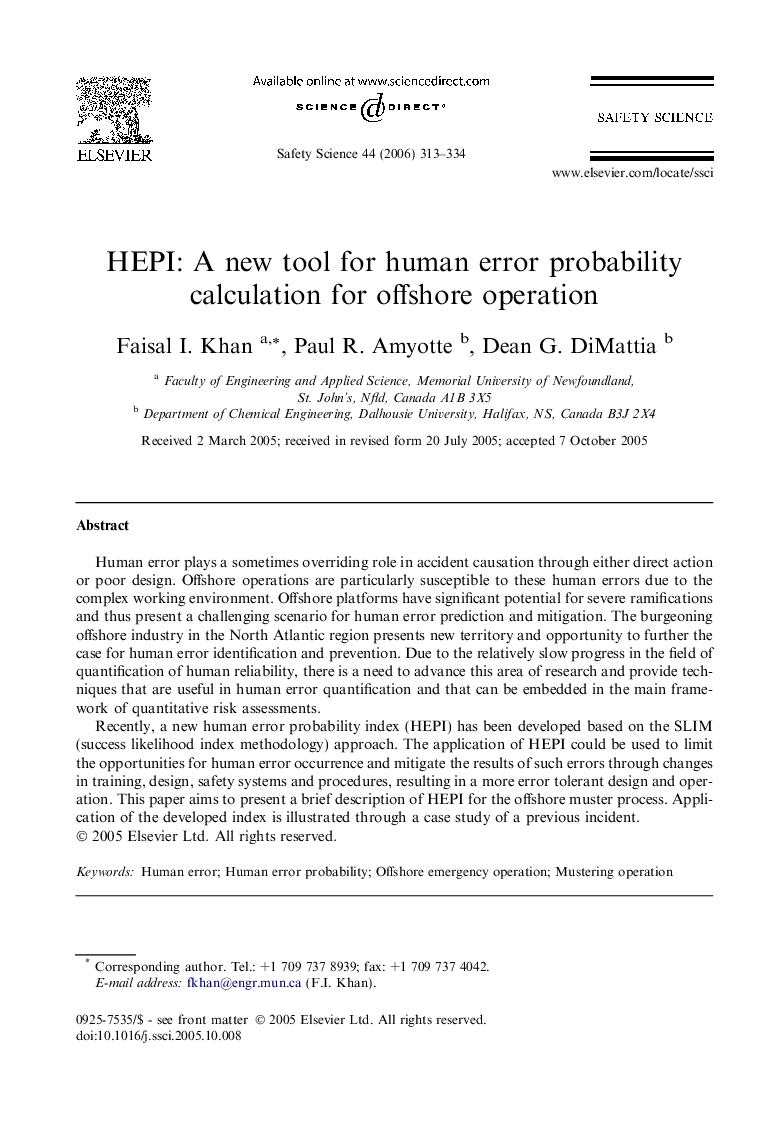| Article ID | Journal | Published Year | Pages | File Type |
|---|---|---|---|---|
| 590219 | Safety Science | 2006 | 22 Pages |
Human error plays a sometimes overriding role in accident causation through either direct action or poor design. Offshore operations are particularly susceptible to these human errors due to the complex working environment. Offshore platforms have significant potential for severe ramifications and thus present a challenging scenario for human error prediction and mitigation. The burgeoning offshore industry in the North Atlantic region presents new territory and opportunity to further the case for human error identification and prevention. Due to the relatively slow progress in the field of quantification of human reliability, there is a need to advance this area of research and provide techniques that are useful in human error quantification and that can be embedded in the main framework of quantitative risk assessments.Recently, a new human error probability index (HEPI) has been developed based on the SLIM (success likelihood index methodology) approach. The application of HEPI could be used to limit the opportunities for human error occurrence and mitigate the results of such errors through changes in training, design, safety systems and procedures, resulting in a more error tolerant design and operation. This paper aims to present a brief description of HEPI for the offshore muster process. Application of the developed index is illustrated through a case study of a previous incident.
